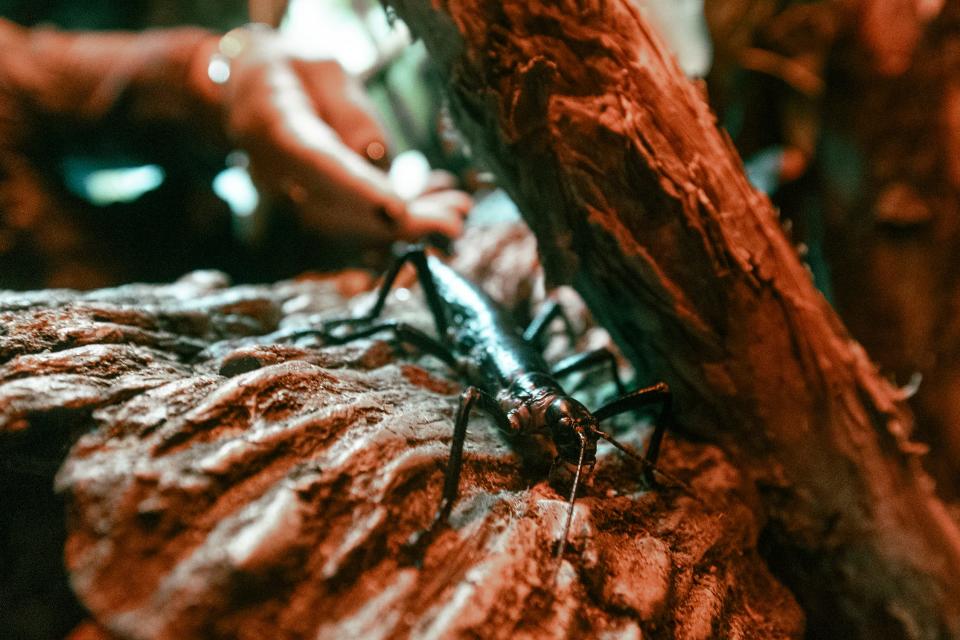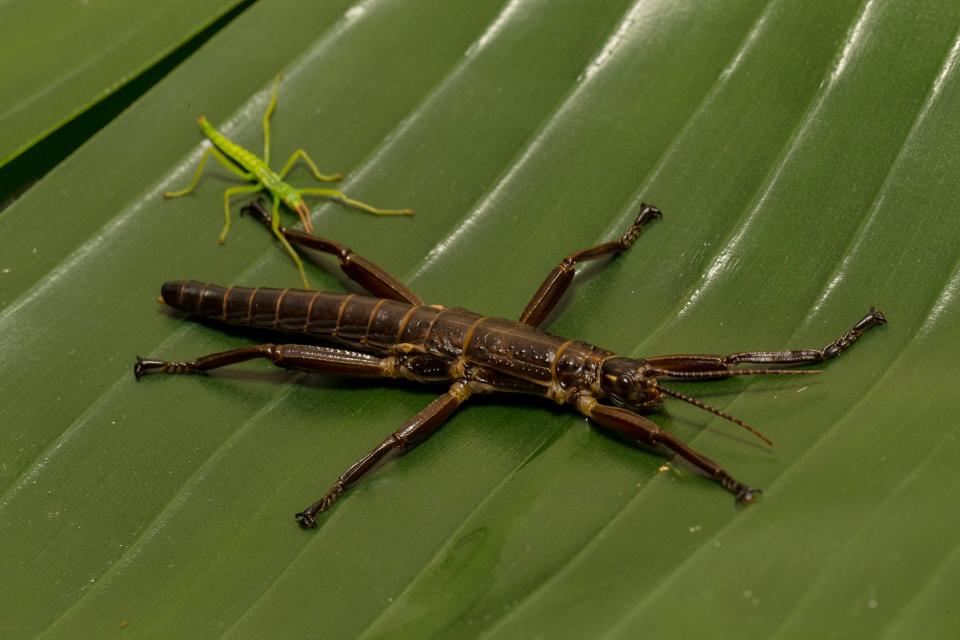'Tree lobsters': Insects believed to be extinct go on display at San Diego Zoo
After conservation efforts that lasted for more than a decade, the San Diego Zoo Wildlife Alliance is finally bringing the critically endangered Lord Howe Island stick insects to the forefront. Visitors to the San Diego Zoo will have the opportunity to see these rare, nocturnal insects in a specialized habitat at the zoo’s Wildlife Explorers Basecamp for the first time in North America, the SD Zoo Alliance announced in a news release. The San Diego Zoo is one of only two zoos outside of Australia and the only zoo in North America to work with this species.
“We are honored to partner with Zoos Victoria on the conservation of the Lord Howe Island stick insect and beyond thrilled to be finally able to share these animals with our guests,” Paige Howorth, director of invertebrate care and conservation, San Diego Zoo Wildlife Alliance, said in a statement. The zoo's entomology team had collaborated with Australia’s Melbourne Zoo to maintain populations of the critically endangered insect.
Howorth added that the Alliance "is committed to invertebrate conservation, and bringing our guests close to this rare and iconic species is a great way to raise awareness for the lesser-known animals that run the world."
Lord Howe Island Stick Insects

Native to the Lord Howe Island Group, a cluster of volcanic islands in the Tasman Sea between Australia and New Zealand from where they get the name, the Lord Howe Island stick insect is a large, flightless, nocturnal insect that can grow up to 6 inches in length when fully mature.
The insects, also known as "tree lobsters," were threatened in their native habitat by invasive plants and non-native predators, including rats, because of which their populations drastically diminished. They were believed to be extinct until a few were rediscovered on a tiny nearby volcanic spire called Ball’s Pyramid in 2001.
Two pairs of the insects were then taken to the Australian mainland for breeding. One of the pairs was taken to Melbourne Zoo, which has successfully maintained this species in managed care. The species was then brought to San Diego Zoo as part of a partnership between the North America zoo and Zoos Victoria/Melbourne Zoo, which has existed since 2012.
San Diego Zoo has received insect eggs from Australia on three occasions since 2012, said the Alliance.
Breeding Lord Howe Island Stick Insects
The stick insects are bred in the McKinney Family Invertebrate Propagation Center, within a dedicated quarantine facility, where temperature and humidity are closely controlled, and UV-transmissible skylights allow access to natural photoperiod cues.
Insect eggs hatch into nymphs, which go through several molting stages for approximately seven months, explains the San Diego Zoo Wildlife Alliance.
"Nymphs are bright green for the first few months of life. As they mature, they begin to darken to greenish-brown and seek shelter during daylight," said the news release. "Adults are a dark, glossy brown-black, and are strictly herbivorous, foraging at night on host plants and resting in tree hollows and other retreats during the day."

To ensure the insects' survival, members of the Zoo's horticulture team also traveled to Australia to collect seeds and cuttings of important host plants for young stick insects that were unavailable in North America, said the Alliance. Adult stick insects have different host plant preferences and the zoo's horticulture team maintains plant material to support the insect population throughout all their life stages.
'In shock': Mississippi hunter bags dwarf deer with record-sized antlers
'Alone and malnourished': Orphaned sea otter gets a new home at Chicago's Shedd Aquarium
Efforts are also being made to return the insect back to its ancestral home and an unprecedented rat eradication effort was implemented in 2019 to rid the island of the predators. This resulted in an “ecological renaissance” on the island, said the SDWZ Alliance, in which many other rare or presumed extinct plant and animal species that fell prey to rats, reemerged.

The Lord Howe Island stick insects are on display at in the Tree Hollow area of Spineless Marvels, Level 1 at the San Diego Zoo. They are kept within a reversed light cycle so that guests can view them during the day under red light, which is invisible to the insects and simulates night, their active time.
Saman Shafiq is a trending news reporter for USA TODAY. Reach her at sshafiq@gannett.com and follow her on X, the platform formerly known as Twitter @saman_shafiq7.
This article originally appeared on USA TODAY: Rare Lord Howe Island stick insect, 'tree lobsters', at San Diego Zoo

